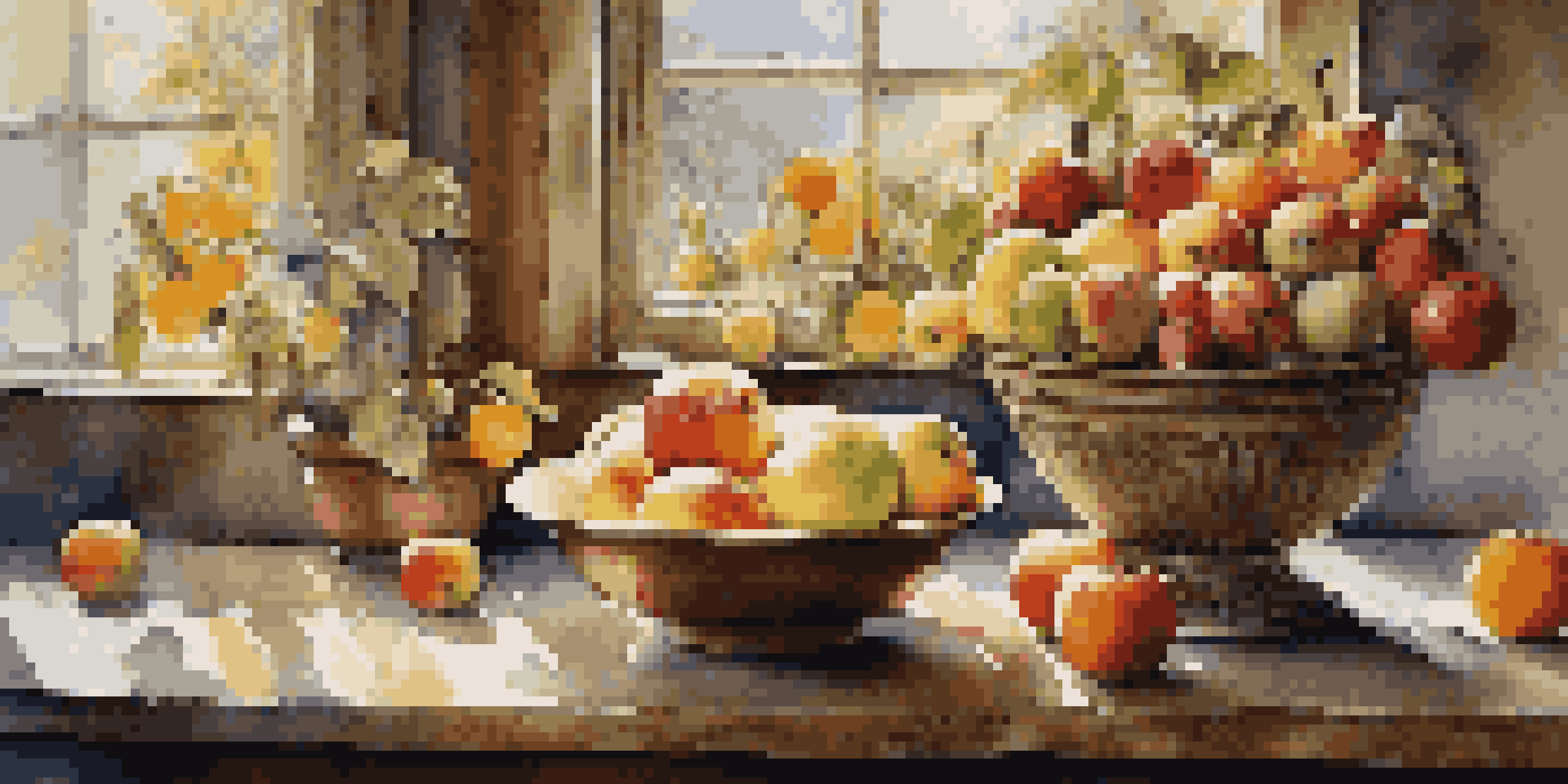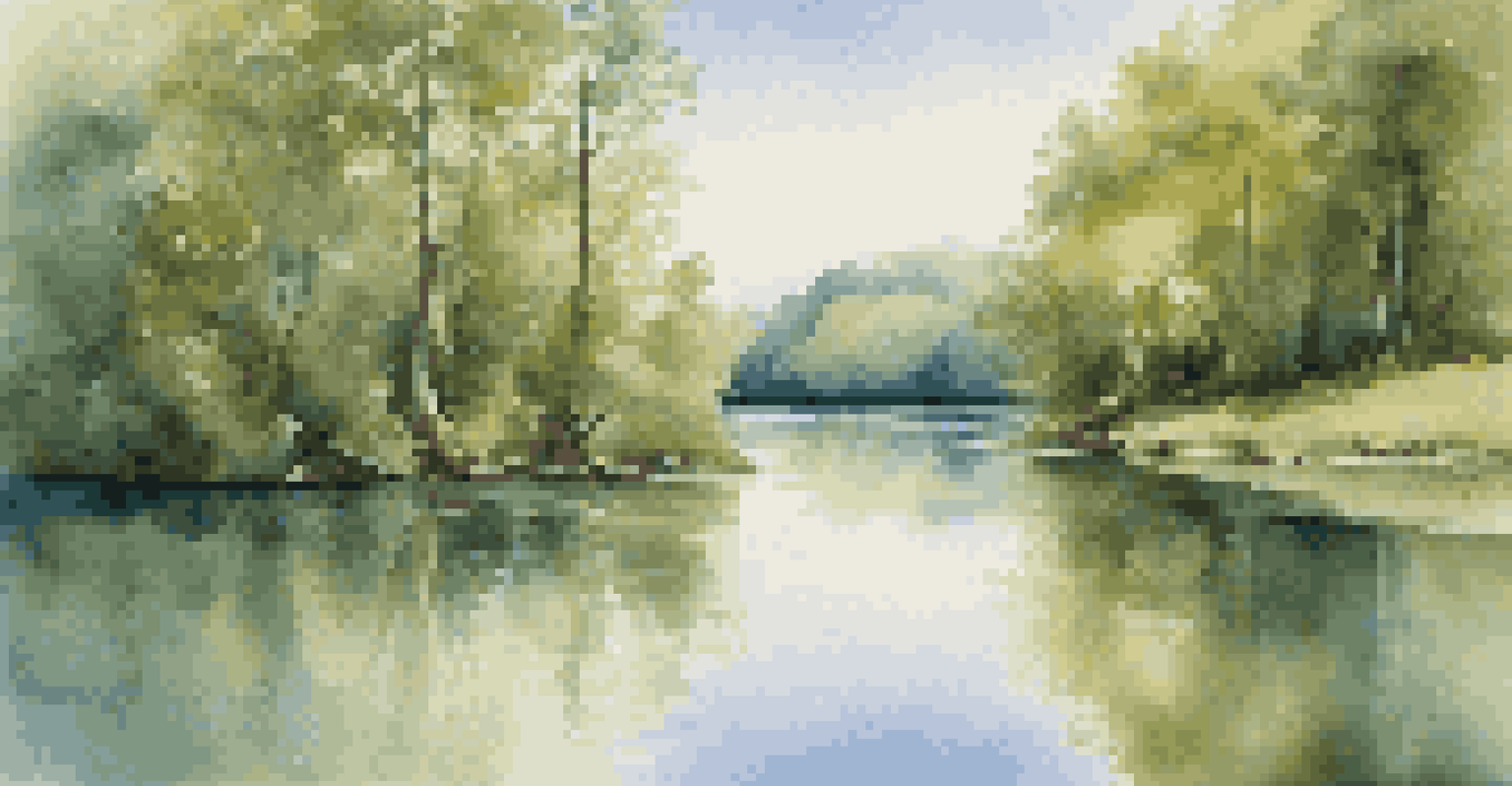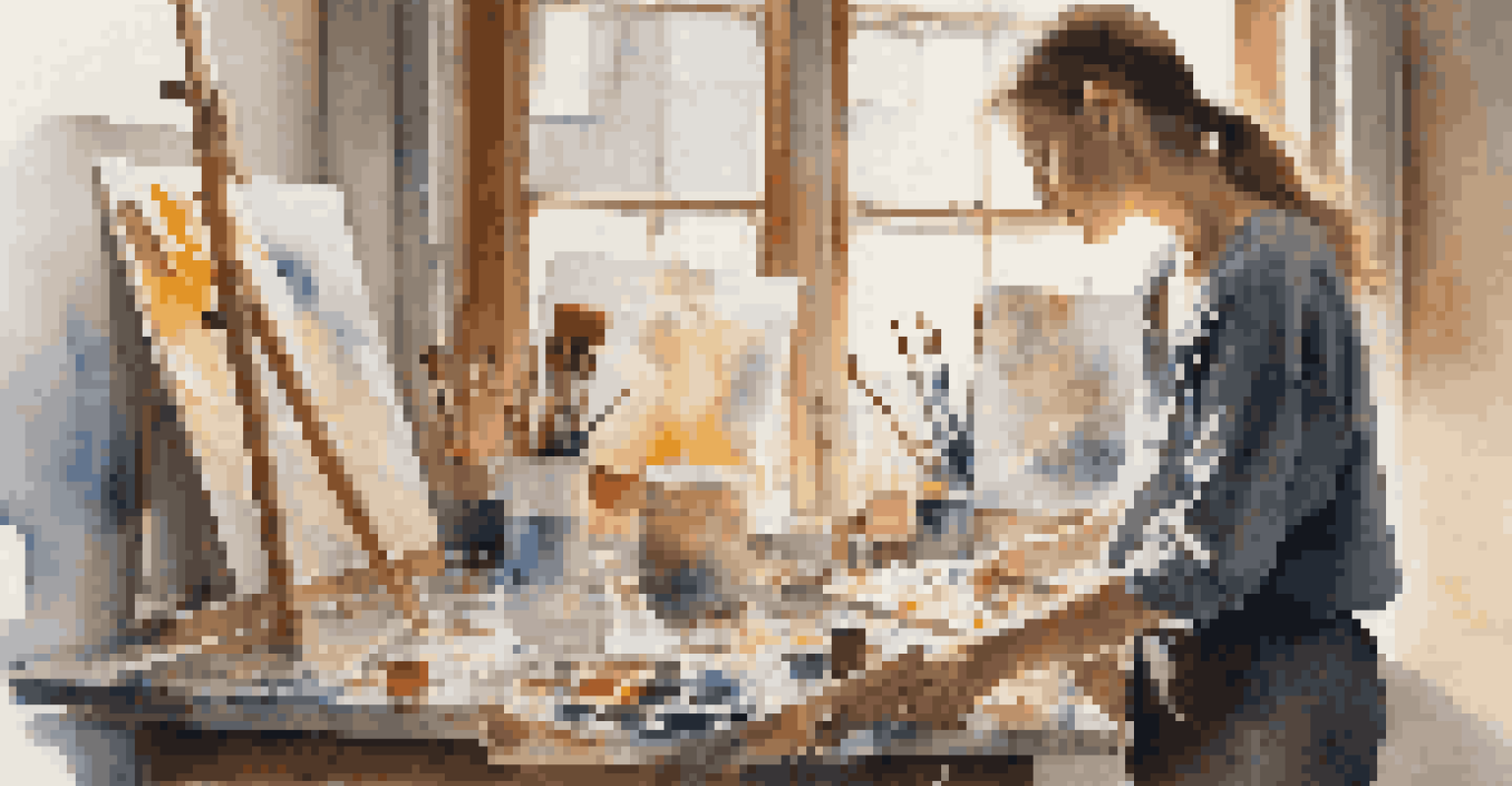Exploring the Benefits of Painting from Life vs. Photos

Understanding Painting from Life
Painting from life involves capturing the essence of a subject in real time, allowing artists to engage with their surroundings. This practice encourages a deeper observation of light, color, and form, resulting in a more dynamic and lively artwork. It’s like having a conversation with your subject, where every brushstroke reflects a moment in time.
The painter's only responsibility is to his art. He won't be concerned about what other people think.
One of the main benefits of this method is the opportunity to interact with the subject directly, which can lead to unexpected discoveries. Imagine painting a still life of fruit; as you observe, the colors may shift based on the light, revealing nuances you might miss in a photograph. This direct engagement fosters a connection that enhances the emotional depth of the piece.
Moreover, painting from life can improve an artist's skills significantly. The challenge of translating a 3D subject onto a 2D canvas strengthens observational abilities and encourages problem-solving. It's like training for a sport—each session hones your skills, making you more adept at capturing the world around you.
The Appeal of Painting from Photos
On the other hand, painting from photos offers its own set of advantages, especially for artists seeking convenience and flexibility. With the ability to pause, zoom, and explore details, photographs provide a wealth of material without the constraints of time or location. It’s akin to having an endless supply of reference material at your fingertips.

Additionally, photos can capture moments that might be fleeting in real life, allowing artists to document scenes that may not be easily replicated. For instance, a sunset that only lasts a few minutes can be immortalized through a photograph, enabling artists to create their interpretation of that beautiful moment. This capability opens new creative avenues and possibilities.
Benefits of Painting from Life
Painting from life fosters deeper observation and emotional connection, enhancing an artist's skills and creativity.
Furthermore, painting from photos can be less intimidating for beginners, as it allows them to focus on technique without the pressure of live subjects. This method can serve as a valuable stepping stone, helping artists build confidence before they tackle the complexities of painting from life. It’s like learning to ride a bike with training wheels—eventually, you’ll want to take them off, but they help you gain balance first.
Capturing Light and Color Differences
One of the significant differences between painting from life and photos is how light and color are perceived. When working from life, artists can see how light interacts with their subject in real-time, capturing subtle shifts and reflections. This dynamic quality often results in vibrant, lively paintings that feel more immediate and authentic.
Every artist dips his brush in his own soul, and paints his own nature into his pictures.
In contrast, photographs can sometimes flatten these nuances, leading to a different interpretation of color and light. A photo might enhance certain aspects, but it can also obscure the depth and richness that come from direct observation. Think of it as trying to capture the warmth of a hug through a screen—there’s a certain intimacy lost.
Understanding these differences is crucial for artists, as they can choose which method best suits their style and intention. By experimenting with both, artists can develop a versatile approach, blending techniques to enrich their work. It’s like having two distinct palettes to choose from, each offering unique colors and textures.
The Challenge of Time Management
Time management is another factor that can influence the choice between painting from life and photos. When painting from life, artists may need to consider the duration of their sessions, as capturing a subject can be time-consuming. This challenge can lead to a sense of urgency, pushing artists to make quick decisions and encouraging spontaneity in their work.
Conversely, painting from photos allows for a more flexible approach to time. Artists can paint at their own pace, revisiting details and making adjustments as needed. This flexibility can be especially beneficial for those with busy schedules, where finding uninterrupted time for a session can be tough.
Advantages of Painting from Photos
Using photos allows for flexibility and detail exploration, making it easier for beginners to build confidence.
Ultimately, awareness of time's influence can help artists plan their sessions more effectively. Whether opting for the immediacy of life painting or the convenience of photos, managing time wisely enhances the overall creative experience. It’s all about finding a rhythm that suits your lifestyle.
Developing Personal Style and Voice
Both methods of painting can significantly contribute to an artist's personal style and voice. Painting from life often encourages a more expressive approach, as artists react to their environment and the subject in real-time. This immediacy can lead to a more dynamic and personal interpretation of the world.
On the other hand, painting from photos allows for more experimentation with composition and color without the constraints of a live subject. Artists can manipulate elements in their photos, creating unique narratives or emotional contexts. It’s similar to storytelling—the way you choose to tell a story can change the entire message.
As artists navigate between these methods, they can discover what resonates most with their own artistic voice. This exploration can lead to a more refined and authentic style that reflects their experiences and perspectives. Like trying on different outfits, each method allows artists to showcase different facets of their creative identity.
Learning from Each Approach
Exploring both painting from life and photos provides invaluable lessons for artists. Each method presents distinct challenges and rewards, enriching the creative process. By alternating between the two, artists can gain a broader understanding of their craft and develop a more well-rounded skill set.
For instance, painting from life may sharpen an artist's ability to observe and react quickly, while painting from photos can enhance their understanding of composition and detail. This interplay fosters growth, as artists learn to adapt their techniques to various situations. It’s like cross-training—each discipline strengthens the other.
Balancing Both Painting Methods
A strategic blend of painting from life and photos enables artists to develop a versatile practice and a unique style.
Ultimately, embracing both approaches can lead to innovative artistry. Artists who are willing to learn from both life and photos can create works that are not only technically proficient but also deeply expressive. This duality can become a powerful tool in their artistic toolkit.
Finding Balance Between the Two Methods
Finding a balance between painting from life and photos is key to developing a versatile artistic practice. By understanding the strengths and weaknesses of each method, artists can choose the right approach based on their goals and circumstances. This adaptability allows for a more fulfilling creative journey.
For example, an artist may prefer to paint from life for landscapes to capture the movement of clouds and the play of light, while opting for photos for intricate still lifes or portraits. This strategic choice can lead to more satisfying results and a richer body of work. It’s like knowing when to use a hammer or a screwdriver—the right tool makes all the difference.

In the end, the most successful artists are those who can fluidly navigate between these two approaches. By embracing both painting from life and photos, they can create a diverse portfolio that showcases their unique vision and style. This flexibility not only enhances their art but also keeps the creative process exciting and fresh.